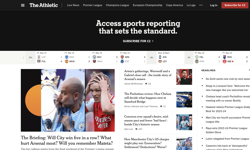"Globally, the future for newspapers will be one of continued change and adaptation to the new consumer reality of increased media choice and less time to consume. This is a reality in which newspapers will continue to deliver rich editorial and advertising content to a mass audience of newspaper readers in every corner of the globe."
This extract from the World Association Of Newspapers (WAN) report – World Press Trends 2004 encapsulates, in the opening sentence at least, the prevailing situation facing most newspaper publishers. One could argue, however, that the last line of this paragraph ought to state that newspaper publishers will continue to deliver rich editorial and advertising content to a mass audience across a range of media platforms that serve to meet the increasingly complex demands of readers, viewers and listeners in their respective home markets.
I draw this distinction, as it is most definitely a reality. Regional publishers face common competitors and other, less tangible, drivers of decline amongst our paid for daily newspapers. Take, for example, traditional communities. Do they still exist? With considerable recent growth in single occupancy households, it is unlikely that newspaper purchasing behaviour will follow a traditional pattern. The idea that communities are increasingly centred around areas of interest as opposed to geographical location has wide implications for editors in terms of content relevance. Furthermore, access to breaking news is now possible from almost anywhere, your desktop internet connection, mobile phone or interactive poster sites to name but three channels. It is therefore unlikely that traditional purchasing behaviour will continue.
Core competencies
It is a question of core competencies. For traditional regional newspaper publishers, understanding just what you are good at is vital. The investment in, and deployment of, a dedicated, community focused team of local reporters and photographers is a particularly powerful asset and one unmatched by television and radio companies for example. Being the first to know offers a significant competitive edge. The same logic applies commercially. Who gets in first when the property boards announce a new development, or a local advertiser offers valuable information on their own and competitor activity?
The power of regional newspaper brands in their respective communities is unmatched. Recent research conducted by the Newspaper Society and Future Foundation proves the case that life is indeed local. The sense of community and locality, particularly in the UK, is very strong and almost every aspect of an individual’s life is conducted within a 14 mile radius of their home. This is supported by the fact that 85% of the UK adult population (40 million +) read a regional press title. Advertising revenue in regional press has grown consecutively for over a decade and in 2003 grew by 2.3% to £2.986 billion, second only to the ever-fragmenting television sector.
The key points here are powerful levers for future growth. Traditional and relatively un-sexy our core titles may be. Trusted, respected and pertinent in respect of living your most local life, they most definitely are.
Now is the time to extend our brands and transfer their core values into complimentary media activities. The delivery of quality editorial and advertising content via a medium conducive to your audiences’ time of day and location is a solid strategy for perpetuating the past and current successes of our print products. As societies change and embrace new technologies, then so must we as newspaper people. In fact, we need to become media people and how we market our core offering of editorial and advertising is less relevant in respect of the means and increasingly relevant in respect of the manner. The conduit for the product of our core competence is less important than the growth for its demand and consumption.
Portfolio approach
I am advocating a portfolio approach to publishing in our respective franchises. It is about developing a media channel for every stage of our consumers’ individual day and particular life stage. Can our local business community receive the local news headlines at 7am on their online desktops? Are the latest job vacancies that match the criteria of individual job seekers that registered on your website sent immediately by SMS to their mobile phones? Can you buy the paper at 11am and read in greater detail the story that was briefly presented on the website home page at 7.30am? Maybe a radio update will add greater understanding to an issue as one drives home. The opportunities go on.
At the point an individual wants information, it is about our brands being first choice. As the main supply of this information will be generated via traditional sources, namely, reporters and sales staff, it is the ability to re-purpose one piece of information across multi channels that, in order to survive, is the newly required competence. In the case of Guardian Media Group (GMG) our conviction to this belief is evident as a founder investor in Newsplex at South Carolina University. We are at the cutting edge of understanding the developing and dynamic newsroom of the future and media convergence both editorially and commercially.
Using the Manchester Evening News’ (MEN) situation as a case in point, we are well along the convergent path. Commercially we are able to harness the strength of our daily paid for flagship title, the MEN along with the weekly free Metro News, Britain’s biggest weekly free title. Add to that the new and highly successful phenomenon of the young and affluent urban daily commuter free title, Metro. Complementing this are an award winning online offering www.manchesteronline.co.uk, a weekly full colour gloss listings magazine, City Life and five associated annual guides.
Via additional GMG investments we have access to local commercial radio in Smooth FM (formerly Jazz FM) and Channel M Television offers an exciting opportunity for packaging our very own city television station.
Whilst this broad portfolio of on, offline, print and broadcast media channels is eclectic in its potential to advertisers, the real challenge lies in identifying a trading currency that will hold water with the increasingly sophisticated demands of advertisers and their appointed media specialists.
Audience measurement
Do we need to identify an audience measurement tool, which can be used cross-media, or do we need to identify how to better increase advertising effectiveness across the platforms we sell?
In a media landscape that is so fragmented and where media consumption is so varied, gone are the days of persuading a client to spend their budgets in one media or another on the basis of pure numbers. Clients are increasingly demanding more research into the effectiveness of the proposed media and its respective audience measurement system. Take for example PHD’s client Transport for London, who demanded they investigate the effectiveness of GfK’s wristwatch measurement tool compared to RAJAR’s diary based methodology.
But how do you create a cross media audience measurement system upon which everyone agrees? I am not sure you ever will. The simple reason being that each media owner has too much invested in their prevailing currency. A change to the system will mean winners and losers and clearly no one wants to be the loser. In fact, it is hard enough to get media owners and agencies to agree on the validity of existing research. Look for example, at the situation with RAJAR and the current debate surrounding NRS and their sample sizes; by their own admission their data is ‘of decreasing credibility and perceived commercial value.’
So we are left using research that concentrates on the relative "strengths" of one media over another…
Consortium research
Consortium research is increasingly valuable and on a cost sharing basis relatively viable. The PPA has produced the "Quality of Reading Survey: Absorbing Media" and "Creative Format: Premium Impact for Magazines". The various radio groups have similarly invested in the RAB. The Newspaper Society represents the interests of the regional press industry and recent research projects have investigated its ‘effectiveness’ in converting customers to buyers. A study in which more than 9,000 people were interviewed at a cost of more than £400,000, found that local press pushes consumers along the buying process, delivering significant increases in awareness, familiarity and consideration, which lead to increased sales. Conversion is the unique proposition of the regional and local press as an advertising vehicle.
Cross media consortiums
But what of cross media consortiums? Well, there is ROAR, which has undoubtedly had a big impact on the marketing and advertising to the 16-24 year old market. Media DNA is arguably one of the best examples of consortium based cross media research, set up two years ago by ZenithOptimedia, Capital Radio, News International, Yahoo, BSkyB and IPC, presenting media planners with a planning tool that offers a more ‘holistic brand matched media plan.’ However, none of the cross media consortiums include a single regional press owner and none of them offer a planning tool which fuses audience understanding and media platform with cross media audience delivery in terms of reach and frequency.
However this may be about to change. Although there are few media owners who have cross media interests, those that do, Emap, GMG, BBC to name a few, are investing heavily in the IPA TouchPoints Survey which seeks to integrate with existing industry currencies to provide a fully integrated multi-media planning tool. The aim is that this will launch in spring 2005… watch this space.
In the meantime, if reach / coverage alone are no longer the bedrock of traditional media planning, consortium based research is mainly focussed on one media type (magazines, radio, newspapers etc), and existing traditional media research is under ever increasing scrutiny, how do individual media owners persuade the client to advertise with them as opposed to their competitors? And how do media owners with cross media platforms sell portfolio packages without ‘count’ based ‘how many, how often’ research?
Media owner based research
Surely we have to rely on media owner based research. This inevitably brings with it the ‘well you would find that wouldn’t you’ criticism levelled by increasingly sceptical and cynical media planners. However, consortium based research aside (which tend to deliver insights into the relative strengths of one medium over another eg RAB, NRS, QRS etc) properly planned and executed audience research by individual media owners is the final resort in delivering insights valuable to the advertising and marketing departments and media planners alike.
Trinity Mirror conducted the largest ever regional press survey involving 34,000 interviews last year, which found that local press titles are perceived to be the most trustworthy media by readers. Marketing director Jane Nugent commented ‘we’ve focussed on determining the activities of people in our markets over the next 12 months. This will ensure that advertisers can reach the right interest groups and help Trinity Mirror develop both our newspaper platforms and associated products’. Paul Godfrey, market research and development manager, added ‘this research enables the targeting of people by their lifestyles and interests’.
This research again focussed on the strength of one media (over others) in ‘abstract’ terms without providing real hard ‘actionable’ statistics in terms of like for like audience volume comparisons.
Perhaps the main reason for this overwhelming focus on ‘abstract’ media comparisons brings us back to the point made above – that there is currently no one all encompassing, consistent and universally accepted metric that measures ‘audience’ across different media. For example, average issue readership is the measure of the printed press audience. In contrast, page impressions, unique users, and visits (over a given time period) are the currency of digital media. These are in effect measuring the same thing – audience size – but in different ways (using different metrics). As such, the two are not compatible. They cannot be added together to give a total audience size across the two media.
Without this compatibility (without a common cross-media currency) it is not possible to compare in simple numeric ‘like for like’ terms how different media compare. As such, it is not possible to take a true multi-product multi-media approach to media planning as it is not clear – in ‘hard’ numeric audience size terms – how a portfolio of products fit together (or can be used effectively by advertisers).
In the absence of this common currency, the MEN is currently developing a cross media audience measure as part of our current readership research. To derive this measure we have taken a relatively simplistic approach to the problem by applying the currency of the printed press audience – average issue readership – to other media in our product portfolio. That is, we are applying the ‘readership’ method of measurement to derive a measure of radio ‘listenership’, television ‘viewership’ and internet ‘usership’.
This is not without its problems. For example, deriving a measure of average issue readership for newspapers is relatively straightforward. It is easy to calculate the average number of people who read a newspaper when the research tells us how many people read each copy of our newspaper and we know how many issues of that newspaper we supply. However with our internet site, which is available to ‘read’ 24 hours a day, 7 days a week, and whose content is updated continuously, it is difficult to distinguish (and thus define) one ‘issue’ from another.
Nevertheless, in the absence of an industry wide cross-media measurement standard, we see this as a step in the right direction. We accept that this method is unlikely to prove acceptable to the media industry as a whole for the reasons pointed out above (ie. there will be winners and losers in applying an audience measure more suited to one media than another). However, it allows us to derive a measure of our total audience across all media platforms in our portfolio using one common currency, and thus allow advertisers to take a cross-media approach to media planning. We do however await the results of the IPA Touchpoints survey with anticipation.
Measuring media effectiveness
Regardless of the pros and cons of developing a cross-media audience measurement tool, measuring audience size or reach alone doesn’t tell us how effective that media is. The cross-media audience measurement method gives us our audience reach (overall and across different products and media) but it doesn’t tell us how many of that audience are engaged – or respond to particular campaigns – conversion!
For this reason, the MEN is investing in further internal research, which aims to identify (in response by advert, and cost per response terms, etc) the relative effectiveness of one platform over another. This research is in its infancy and currently restricted to internal recruitment advertising, but over the next few months we plan to roll-out this research programme externally (we already have secured client ‘buy-in’) and across different trading areas.
These two research programmes together – by fusing audience understanding cross platform with actual advertising response – will not only provide a picture of potential audience size and type by product / media to advertisers, but also provide an indication of how many of that audience (of a certain type with a certain product / media platform) they can expect to engage (respond).
This information could (and should) feed into future advertising pricing models - to more accurately link advert cost to audience size, type and expected response rates by product / media. In this way the whole advertising system can become more transparent - so advertisers can see exactly what they are paying for and make informed media / product / competitor buying decisions based on hard comparable quantifiable facts.
Impact of creativity
And finally, we at the MEN believe in the real importance of creative content and style. Creative, we believe, is where the real opportunity to increase advertising effectiveness lies. Ongoing research carried out by WAN claims that the impact of creativity is often underestimated. The Shaping the Future of Newspapers study claims that press is the most effective advertising medium in terms of getting consumers to act or buy. However clients are failing to realise its full potential. "Effective advertising is as much about the effectiveness of the message as it is of the medium and more work needs to be done, with small and large advertisers alike, in ensuring that every advertisement they produce attracts the maximum number of customers" (Timothy Balding, WAN director general).
Understanding the importance of creativity is exactly why the MEN has recently invested in our recruitment and classified advertising department sales operations offering clients a bespoke creative service, improving design which fuels effectiveness and in turn leads to better response, the driver of revenue now and in the future.
In short, do we really need to demonstrate exactly how many and how often we communicate with an audience, or do we need to concentrate on how effectively we can deliver return on investment for clients? I suggest the latter of the two is infinitely preferably to most clients. So, whilst we continue to investigate how to accurately measure a cross media audience, our main focus remains how to best inform our clients on the most effective way to use our portfolio to deliver the best possible return on their investment.
FEATURE
Regional press - playing to the audience
The Manchester Evening News (like many other regional dailies) has experienced steadily declining circulations over the past six years. Yet deputy managing director Mark Rix is upbeat about the future. He is one of a growing number of regional publishers tuned into the vagaries of today’s (and tomorrow’s) readers. Adopting a portfolio approach to publishing is, he says, the key to a bright future for the regionals.










